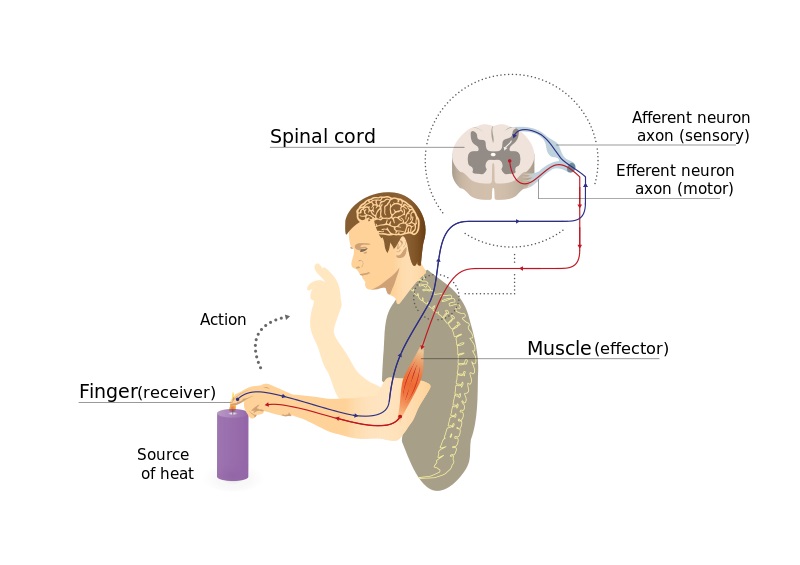

For example, the sympathetic system accelerates the heartbeat, while the parasympathetic system slows the heartbeat. Generally, both sympathetic and parasympathetic systems target the same organs, but often work antagonistically. The parasympathetic nervous system activates tranquil functions, such as stimulating the secretion of saliva or digestive enzymes into the stomach and small intestine. The sympathetic nervous system is involved in the stimulation of activities that prepare the body for action, such as increasing the heart rate, increasing the release of sugar from the liver into the blood, and other activities generally considered as fight‐or‐flight responses (responses that serve to fight off or retreat from danger). The autonomic nervous system has two divisions: The autonomic nervous system (ANS) controls the activities of organs, glands, and various involuntary muscles, such as cardiac and smooth muscles. The somatic nervous system (SNS) directs the contraction of skeletal muscles. Third, motor neurons are further classified according to the effectors they target. Motor ( efferent) neurons transmit impulses from the CNS to effectors (muscles or glands). Sensory ( afferent) neurons transmit impulses from skin and other sensory organs or from various places within the body to the CNS. Second, nerves of the PNS are classified by the direction of nerve propagation. Cranial nerves originate from or terminate in the brain, while spinal nerves originate from or terminate at the spinal cord. First, PNS nerves are classified by how they are connected to the CNS. Nerves of the PNS are classified in three ways. The peripheral nervous system (PNS) consists of nerves outside the CNS. The central nervous system (CNS) consists of the brain and spinal cord. The nervous system consists of two parts, shown in Figure 1: A thorough knowledge of the individual components of the nervous system and their functions, however, will lead you to a better understanding of how the human body works and will facilitate your future acquisition of knowledge about the nervous system. It is difficult to understand all the complexities of the nervous system because the field of neuroscience has rapidly evolved over the past 20 years moreover, answers to new questions are being found almost daily. These actions can be under voluntary control, like touching a computer key, or can occur without your direct knowledge, like digesting food, releasing enzymes from the pancreas, or other unconscious acts. The nervous system integrates and monitors the countless actions occurring simultaneously throughout the entire human body therefore, every task a person accomplishes, no matter how menial, is a direct result of the components of the nervous system. Quiz: Regulation of Urine Concentration.Quiz: Structure of the Digestive Tract Wall.Quiz: Function of the Respiratory System.Quiz: Structure of the Respiratory System.Quiz: Supplements to the Immune Response.Quiz: Humoral and Cell-Mediated Immune Responses.Humoral and Cell-Mediated Immune Responses.Quiz: Specific Defense (The Immune System).The Immune System and Other Body Defenses.Quiz: Functions of the Cardiovascular System.Quiz: The Hypothalamus and Pituitary Glands.

Quiz: The Ventricles and Cerebrospinal Fluid.Quiz: Muscle Size and Arrangement of Muscle Fascicles.Muscle Size and Arrangement of Muscle Fascicles.Quiz: Structure of Cardiac and Smooth Muscle.Quiz: Connective Tissue Associated with Muscle Tissue.Connective Tissue Associated with Muscle Tissue.Quiz: Chemical Reactions in Metabolic Processes.Chemical Reactions in Metabolic Processes.Quiz: Atoms, Molecules, Ions, and Bonds.


 0 kommentar(er)
0 kommentar(er)
